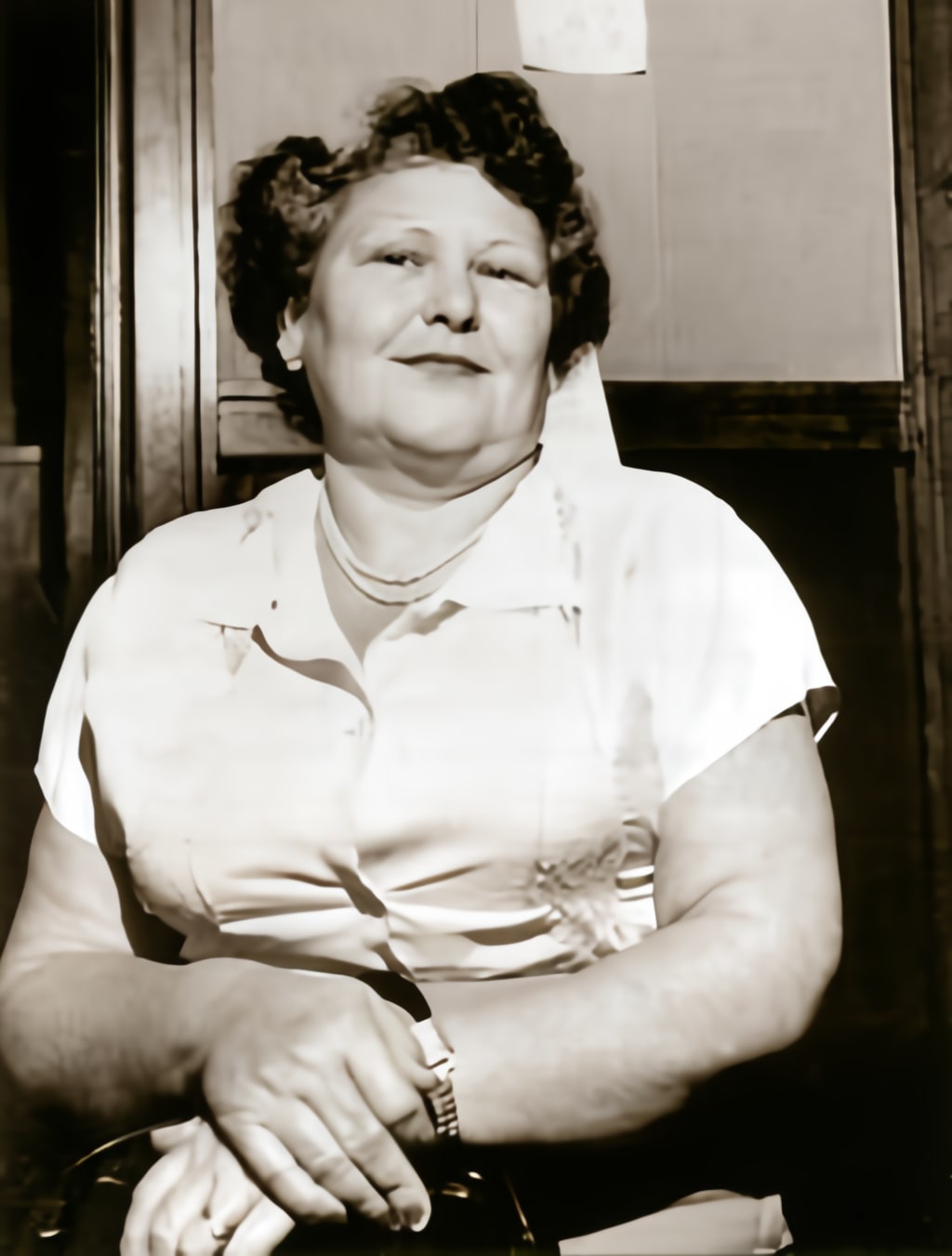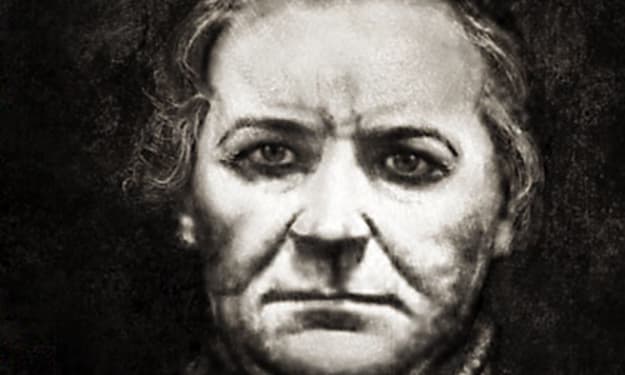
Do you believe in the concept of "black widows"? Women who marry multiple times, only to poison their husbands one by one, for the sheer pleasure of it? Or do you think such stories are just the stuff of myths and legends?
Meet Nannie Doss, a notorious American serial killer who was known as the "Giggling Granny" or the "Lonely Hearts Killer." Over the course of several decades, she killed four of her five husbands, as well as her mother, two sisters, two of her children, and a grandson. What drove Nannie Doss to commit these heinous crimes, and how did she manage to avoid suspicion for so long?
The Early Years of Nannie Doss
Born in Blue Mountain, Alabama, on November 4, 1905, Nannie Doss was the fifth of 11 children. Her father, James Hazle, was a cotton mill worker who was known for his heavy drinking and violent temper. Her mother, Louisa, was a homemaker who suffered from depression and physical ailments. Nannie had a difficult childhood, marked by poverty, illness, and abuse. She dropped out of school in the eighth grade to help support her family, taking on odd jobs and working in the cotton fields.
In 1921, at the age of 16, Nannie married her first husband, Charles Braggs, a man 10 years her senior. The marriage was a disaster from the start, with Charles being physically and emotionally abusive towards Nannie. They had four children together, but two of them died in infancy. Nannie would later claim that Charles had poisoned them, but there was no evidence to support this.
Over the next several years, Nannie would marry and divorce three more times, each marriage ending in disaster. She had a reputation for being difficult to live with, with a sharp tongue and a quick temper. She was also known to be a heavy drinker, and was often seen arguing with her husbands in public.
The Killings Begin
It wasn't until the 1940s that Nannie Doss began her killing spree in earnest. Her first victim was her second husband, Frank Harrelson, whom she married in 1947. Frank was a heavy drinker, and Nannie quickly grew tired of his habit. She began to slip small amounts of rat poison into his food and drinks, until one day he became violently ill and died. Nannie claimed that he had suffered a heart attack, and no autopsy was performed.
Nannie's third husband, Arlie Lanning, suffered a similar fate. They married in 1950, but within a year, Nannie had grown tired of him as well. She began to slip arsenic into his food and drinks, until he too became violently ill and died. Nannie claimed that he had contracted a virus, and again, no autopsy was performed.
It wasn't until Nannie's fourth husband, Richard Morton, that suspicions began to arise. Richard was a successful businessman who had made a fortune in the insurance industry. He and Nannie married in 1953, but within a few months, he began to suffer from mysterious illnesses. He was hospitalized several times, but doctors were unable to diagnose his condition.
Finally, in 1954, Richard's doctor suggested that he be hospitalized at a specialist facility. Nannie was horrified at the idea, and begged Richard not to go. But he went anyway, and after a battery of tests, it was discovered that he had been poisoned with arsenic. Nannie was arrested and charged with murder.
The Trial and Conviction
At her trial, Nannie Doss was portrayed as a cold, calculating killer who had murdered for profit and pleasure. Prosecutors argued that she had carefully planned each murder, using different methods and poisons to avoid suspicion. They also pointed to her past marriages and the deaths of her family members as evidence of a pattern of behavior.
Nannie, however, claimed that she had not intended to kill anyone, and that the poison was only meant to make her victims sick, so that she could take care of them and nurse them back to health. She claimed that she loved her husbands and children, and that she was simply trying to help them.
Despite her claims of innocence, Nannie Doss was found guilty of murder and sentenced to life in prison. She died in the Oklahoma State Penitentiary in 1965, at the age of 59.
The Legacy of Nannie Doss
The case of Nannie Doss continues to fascinate and horrify people to this day. She is often cited as an example of the "black widow" archetype, a woman who marries multiple times, only to poison or kill her husbands for financial gain or personal pleasure.
But there is more to the story than just a sensational tale of murder and mayhem. Nannie Doss was a woman who had a difficult and traumatic childhood, marked by poverty, abuse, and illness. She was also a product of her time, a time when women had few opportunities or rights, and were often dependent on men for their survival.
In some ways, Nannie's crimes can be seen as a rebellion against the oppressive and patriarchal society in which she lived. She may have felt trapped and powerless in her marriages, and killing her husbands may have been a way for her to assert some control over her life.
Of course, this is not to excuse or condone her actions. The murders of Nannie Doss were heinous and unforgivable, and she deserved to be punished for them. But understanding the context in which they occurred can help us to better understand the complex motivations behind her crimes.
Conclusion
The case of Nannie Doss is a cautionary tale about the dangers of unchecked power and control. It is also a reminder that behind every crime, there is a human being with a story to tell. By examining the life and crimes of Nannie Doss, we can gain a deeper understanding of the forces that drive people to commit terrible acts, and the importance of compassion and understanding in the pursuit of justice.





Comments
There are no comments for this story
Be the first to respond and start the conversation.